Abstract
Cadmium uptake by red pine (Pinus resinosa Ait.) pollen from a graded series of Cd2+ solutions (0 to 2.88 microequivalents per 50 milligrams pollen) and its effect on membrane integrity were examined by atomic absorption spectroscopy. Uptake was strongly dependent on Cd2+ concentration and was limited to adsorption and cation exchange in pollen walls during a 3-hour measurement period. Good correlation between measured Cd2+ uptake and that predicted by the Langmuir and Freundlich isotherm equations indicated the adsorptive nature of Cd2+ uptake. While substantial quantities of Ca2+ and Mg2+ were released by exchange mechanisms concurrent with Cd2+ uptake, there was no evidence for leakage of cations due to membrane impairment as indicated by a poor correlation between Cd2+ uptake and K+ efflux. Virtually all Cd2+ removed from solution was freely exchangeable with 0.5 millimolar CaCl2 and demonstrated that Cd2+ did not readily enter pine pollen but was adsorbed on the pollen wall. Ultraviolet transmission spectra of treatment solutions and analyses of phosphate and reducing sugar efflux also indicated that the potent toxicity of Cd2+ to pollen germination and germ tube elongation was not the result of membrane damage.
Full text
PDF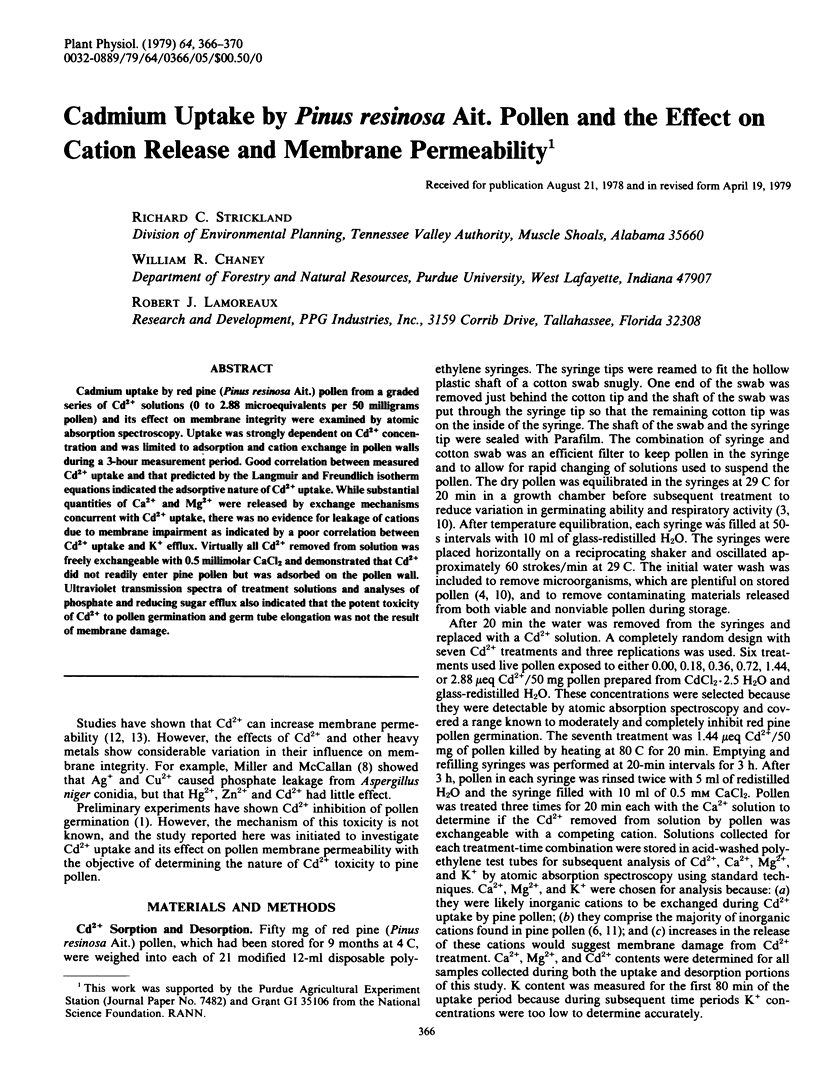
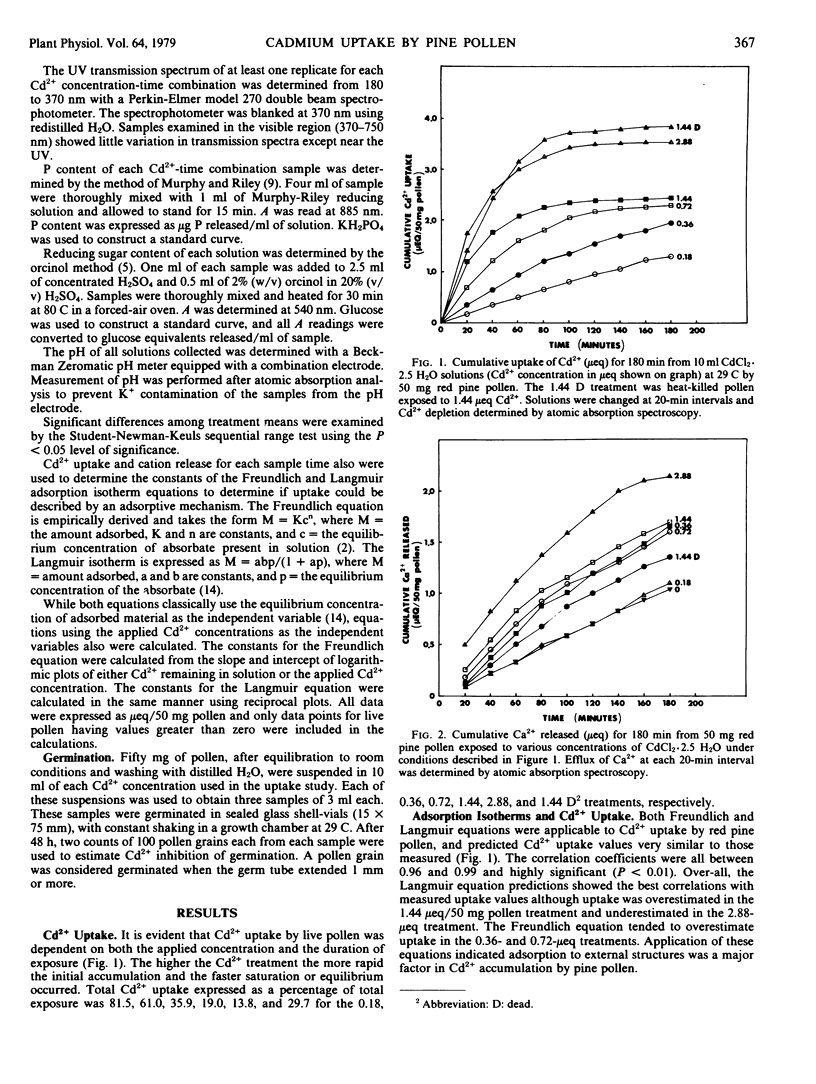
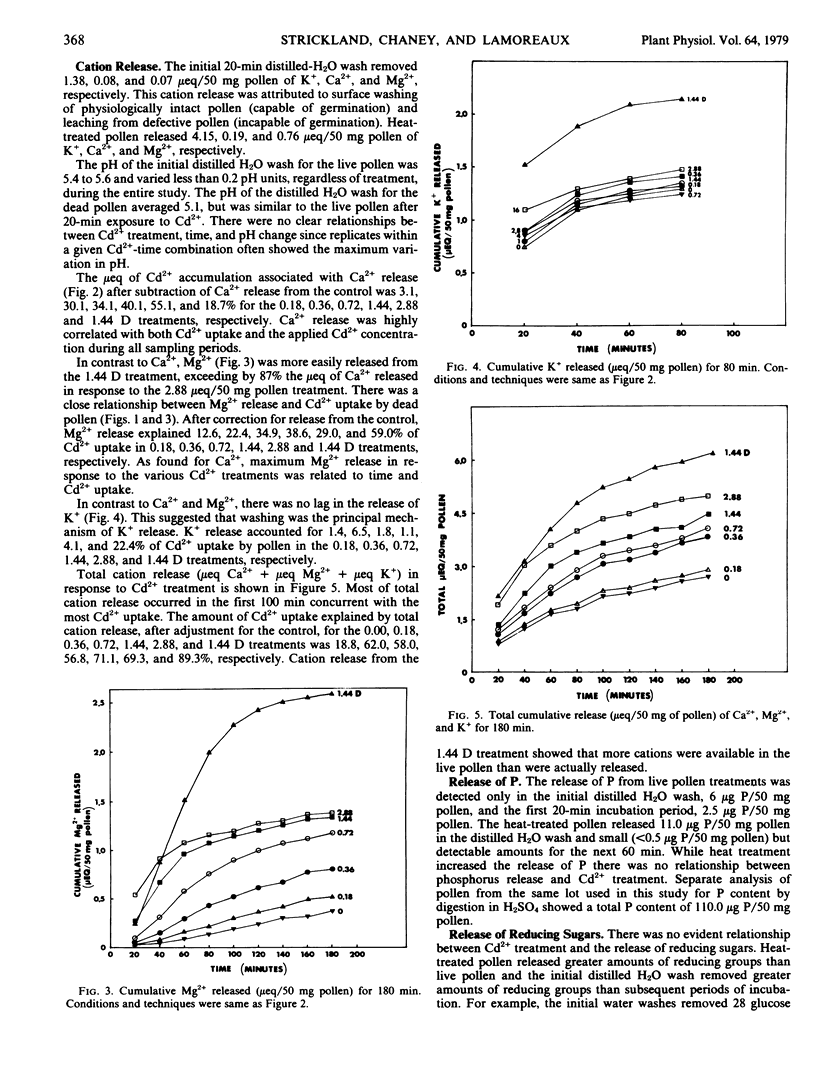
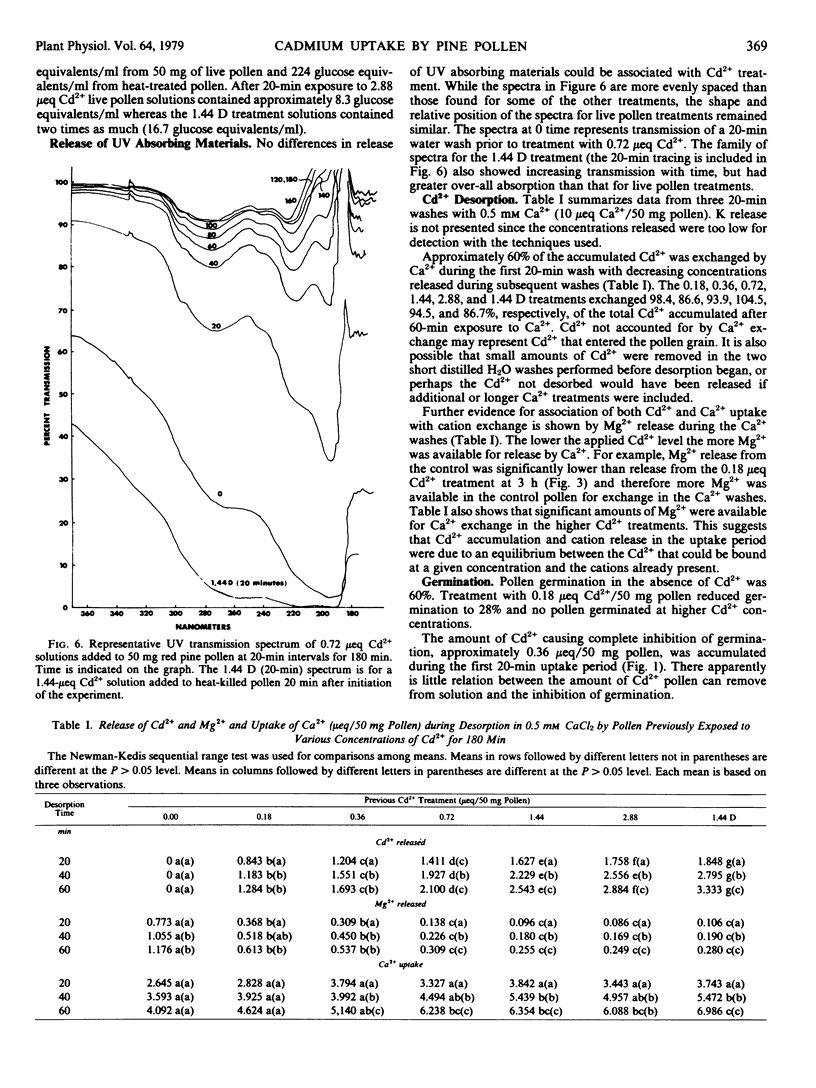
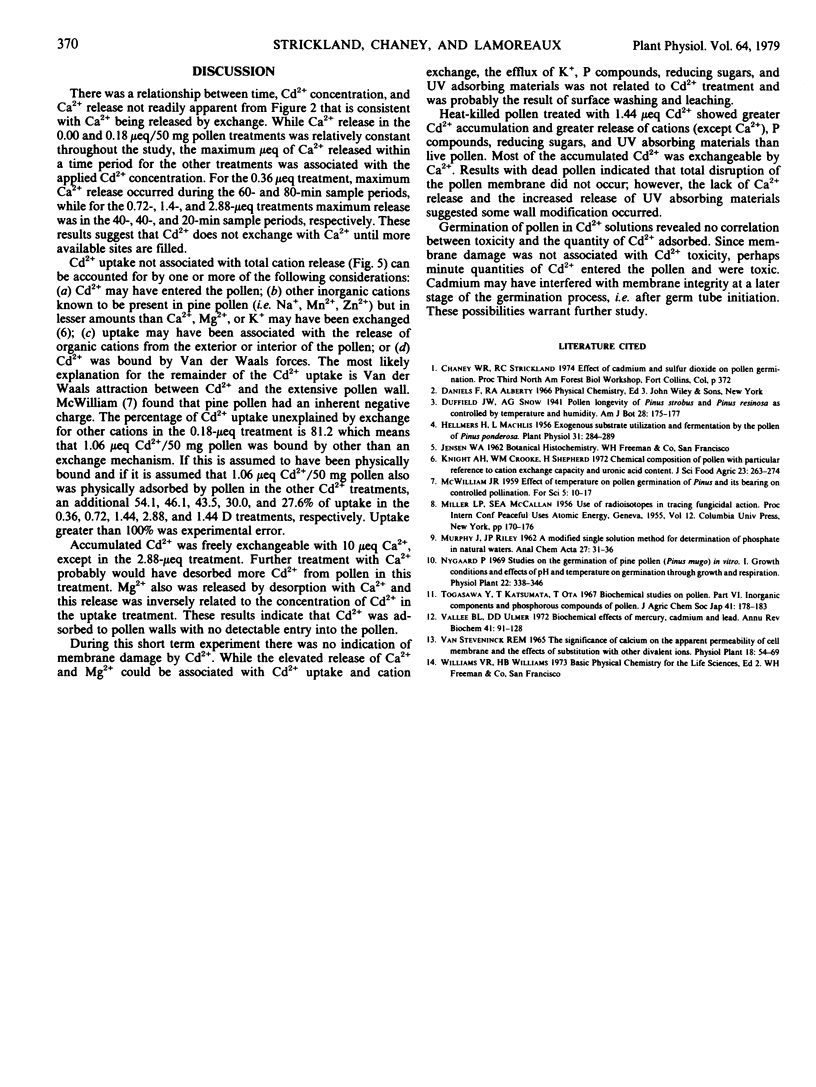
Selected References
These references are in PubMed. This may not be the complete list of references from this article.
- Hellmers H., Machlis L. Exogenous Substrate Utilization and Fermentation by the Pollen of Pinus ponderosa. Plant Physiol. 1956 Jul;31(4):284–289. doi: 10.1104/pp.31.4.284. [DOI] [PMC free article] [PubMed] [Google Scholar]
- Knight A. H., Crooke W. M., Shepherd H. Chemical composition of pollen with particular reference to cation exchange capacity and uronic acid content. J Sci Food Agric. 1972 Mar;23(3):263–274. doi: 10.1002/jsfa.2740230302. [DOI] [PubMed] [Google Scholar]
- Vallee B. L., Ulmer D. D. Biochemical effects of mercury, cadmium, and lead. Annu Rev Biochem. 1972;41(10):91–128. doi: 10.1146/annurev.bi.41.070172.000515. [DOI] [PubMed] [Google Scholar]


